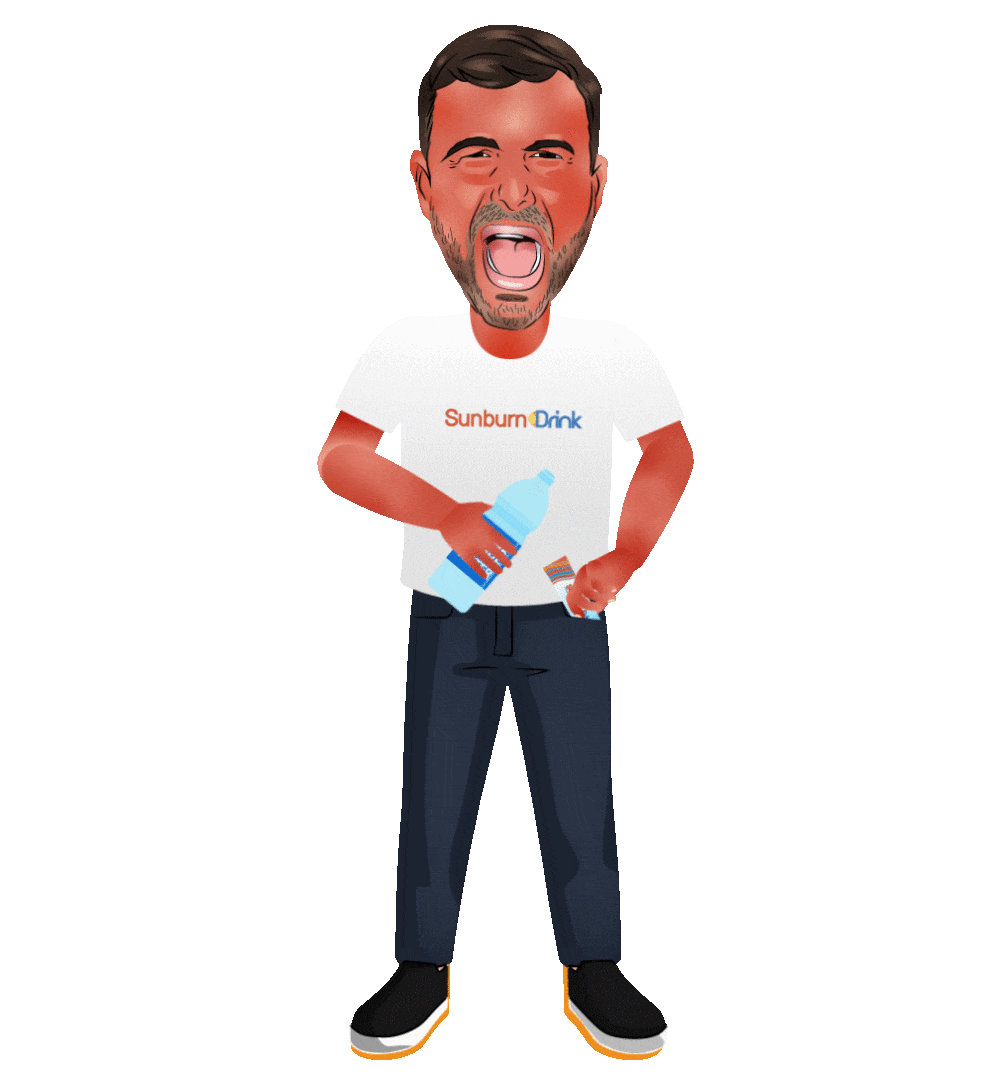Are you fed up with painful sunburns and skin peeling? You’re not alone!
Sunburns happen when your skin is exposed to excessive UV radiation from the sun.
As your skin attempts to repair itself, peeling naturally occurs. This is the body’s way of discarding damaged cells.
Peeling is a mechanism that the body employs to eliminate damaged skin cells, promoting the growth of healthier skin underneath. Despite the temptation to remove flaky skin, doing so can elevate the risk of infection and impede the healing process.
Understanding how sunburn and peeling occur is crucial in preventing future damage to your skin.
At this point, you must be wondering how to prevent sunburn from peeling. Right?
Here we will delve deeper into effective strategies for avoiding sunburn and minimizing the chances of peeling. Stay tuned to learn more!
Understanding Sunburn Peeling
Sunburn occurs when your skin gets too much exposure to the sun’s ultraviolet (UV) rays, leading to inflammation and damage.
Peeling is a mechanism that the body employs to eliminate damaged skin cells, promoting the growth of healthier skin underneath. Despite the temptation to remove flaky skin, doing so can elevate the risk of infection and impede the healing process.
How to Prevent Sunburn from Peeling
To learn how to prevent sunburn from peeling, the best way is to prevent sunburn in the first place.
Here are some proactive measures to minimize the risk of sunburn and subsequent peeling:
Stay Hydrated:
Adequate hydration is essential for sustaining skin health. Well-hydrated skin possesses greater resilience and a heightened ability to recover from sunburn. Consistently drink water, particularly if you’ve been exposed to the sun.
Moisturize:
Multiple applications of a mild, fragrance-free moisturizer throughout the day are beneficial. Moisturizers aid in preserving the skin’s inherent moisture, thereby decreasing dryness that contributes to peeling.
Cool Compresses:
Applying cool, damp cloths to your sunburned skin can provide relief and help soothe inflammation. Avoid using ice directly on the skin, as it can worsen irritation.
Or if you want to try more soothing cool compresses (if you have time and resources), here are some exciting ideas for you.
- Aloe Ice Cubes: Put some aloe gels in the ice tray and let it set in the fridge. Apply these aloe-infused ice cubes gently to the sunburned areas for a soothing and moisturizing effect.
- Green Tea Infusion: Brew a pot of green tea, let it cool, and then soak a soft cloth in the tea. Wring out the excess liquid and apply the damp cloth as a compress to ease your sunburns.
- Cucumber Delight: Blend chilled cucumber slices into a puree and spread it over a cloth. Apply it on the skin to ease your sunburns.
- Lavender Infused Compress: Add a few drops of lavender essential oil to cold water and mix well. Dip a cloth into the lavender-infused water and gently place it on the sunburned areas to provide a relaxing and soothing experience.
- Oatmeal Pack: Create an oatmeal paste by mixing finely ground oats with cold water. Apply the mixture to a cloth and place it on the sunburned skin to relieve irritation and redness.
- Yogurt Comfort: Apply chilled, plain yogurt directly to the sunburned skin using a cloth. The cooling effect and probiotics in yogurt can help soothe irritation.
- Minty Freshness: Crush fresh mint leaves and mix them with cold water. Strain the mixture and apply the mint-infused liquid as a compress for a refreshing and cooling sensation.
Remember, when using any compress, it’s crucial to be gentle and avoid friction on the sunburned area.
Opt for Lukewarm Showers:
While hot showers might offer comfort, they can worsen sunburn and contribute to peeling. Opt for lukewarm water when bathing.
Apply Aloe Vera:
The soothing properties of aloe vera make it a natural remedy. Applying aloe vera gel to sunburned skin provides relief from discomfort and minimizes peeling.
Consider Over-the-Counter Creams:
Some non-prescription creams and ointments contain ingredients like hydrocortisone, which mitigate inflammation and alleviate itching. Consult a medical professional before introducing new products.
Wear Loose Attire:
Tight clothing can rub against sunburned skin, intensifying irritation. Choose breathable, loose fabrics that won’t adhere to your skin.
Avoid Harsh Skincare Products:
Refrain from using skincare items containing alcohol, retinoids, or alpha hydroxy acids. These components can worsen sunburn and amplify peeling.
Resist Peeling:
Although the urge to remove flaking skin is strong, doing so can hinder healing and elevate infection risk.
Limit Sun Exposure:
Allow your skin to heal by refraining from further sun exposure until redness and peeling subside. If you must be outdoors, wear protective clothing and apply sunscreen.
Consult a Dermatologist:
In instances of severe sunburn covering a significant area, accompanied by fever, chills, or severe pain, seeking medical attention is vital.
Importance of Protecting Your Skin from the Sun’s UV Rays
Safeguarding your skin from the sun’s detrimental UV rays transcends the prevention of painful sunburns and peeling. It is vital for preserving the long-term health and vibrancy of your skin. Prolonged exposure to the sun can lead to premature aging, wrinkles, dark spots, and an escalated susceptibility to skin cancer.
By taking simple steps to protect your skin, such as seeking shade, wearing protective clothing, and applying sunscreen, you can significantly reduce these risks and keep your skin looking youthful and radiant. Remember, sun protection is not just a temporary solution, but a lifelong commitment to the health of your skin.
The Bottom Line:
So you must have understood how to prevent sunburn from peeling.
Sunburn peeling can be both uncomfortable and preventable. By taking proactive measures to prevent sunburn, staying hydrated, and practicing gentle aftercare, you can minimize the risk of peeling and promote healthy skin recovery.
Remember that your skin’s health is a reflection of your overall well-being, so prioritize sun protection and skin care for a radiant and resilient complexion.

